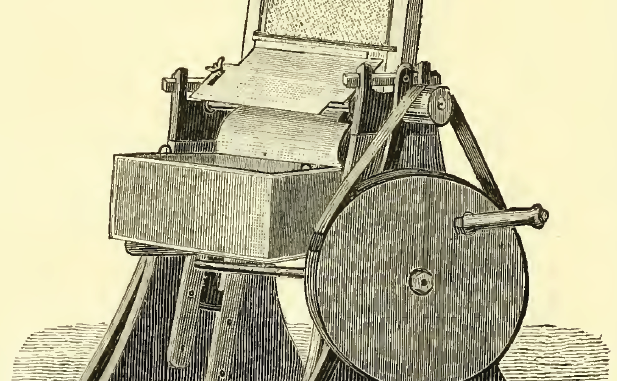
Alan Wade and Frank Derwent
Ever thought that most beekeepers were a kangaroo short in the top paddock. Then try breaking into a beekeepers’ shed to confirm your long-held suspicions.
Let’s start with the discovery of Zorzi’s honey uncapping machine (Figure 1) in one old shed.In extolling its merits, the editors of the British Bee Journal noted dryly:
The uncapping machine, the first of the kind we believe ever made, is the invention of Count R Zorzi, of Bologna, who deservedly received a gold medal for it at the Exhibitioni.
Intrigued, we delved further to garner essential operating intructions for this must-have item:
It will be seen by the illustration that it consists of wooden stand, to which is attached a large wheel worked by a handle. This, by means of a strap, actuates a pulley fixed to a shaft, having an eccentric slot cut, which in turn gives a horizontal motion to a sharp steel blade. This is set at an angle and is fixed by means of thumb-screws…

Caption and Figure 1 Count Zorzi’s 1886 uncapping machine
Now, just over 130 years on, there is little call on such hand operated machines. The hot knife is just as effective and a good deal cheaper. But the world has changed in other ways and mechanised de-capping machines will be found in any large-capacity honey processing plant that you might care to visit.
In a routine sort of ‘your club apiary’ shed, we dragged out an equally weird assortment of gear. We have simply call these items flats (Figure 2). For what purpose would anyone want to keep most of these space wasters?
Or could it be that, like the finders of the wondrous uncapping machine, we are sadly mistaken and that most of the gear is more or less indispensable?
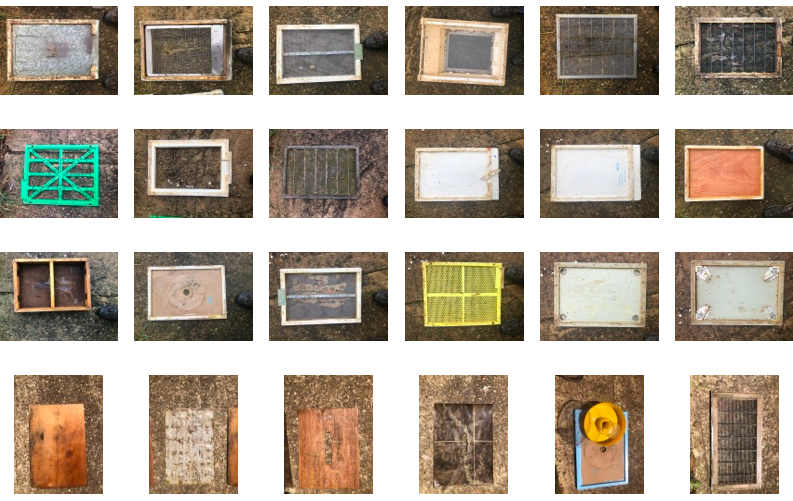
Figure 2 Bee shed assorted flats
We note that most of these items are modified bottom, top and division boards that exert control on the bees to varying degrees. As we shall see a few even help to dispose of hive floor rubbish, wonderful self-cleaning devices.
Now there are many and varied ‘inventive gizmos’ that one has read about but will probably never lay eyes on, things like the Snelgrove Boardii (Figure 3). These items now largely consigned to the dustbins of history, simply because there are easier and better ways of carrying out their functions.

Figure 3 The Snelgrove Board
Another example of an ‘odd find’ is the carbolic acid bee repellant mat. Carbolic acid, better known as phenol, is truely nasty. Bees understandably desert their precious stores to escape their suffocating fumes, and you would too risking life, limb and lung in use of these mats.
But let’s turn to many flats to explain their purpose and let you be the judge as to whether they will clutter your shed, empty your wallet or become bosom friends. We will focus here on those flats that fit between hive bodies and come back to lids and bottom boards in Part II.
The Queen Excluder
An old standard and beekeeper companion, one that surfaced in the 1880siii is the queen excluder. Way back then they were made, as today, of ‘perforated zinc’ aka galvanised iron sheeting (Figure 4). But they only became really popular after passing the pub test for reliability in 1891iv. Even today, they tend to remove legs and wings. Gap width is between 4.1 and 4.4 mm.
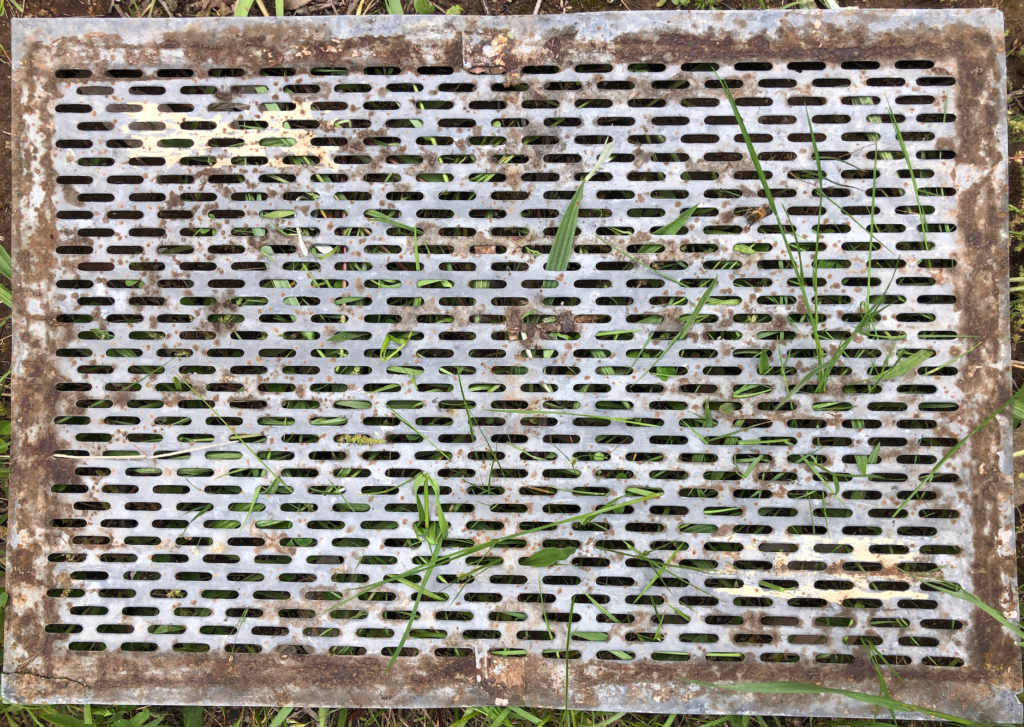
Figure 4 ‘Queen excluder zinc’ invented in the 19th Century
Wire queen excluders (Figure 5), largely overcome this problem by eliminating the sharp edges but always trap drones and sometimes bees. Wire excluders are either welded, brazed, or die cast. They are reliable, sturdy, and are one of the most commonly used hive accessories.
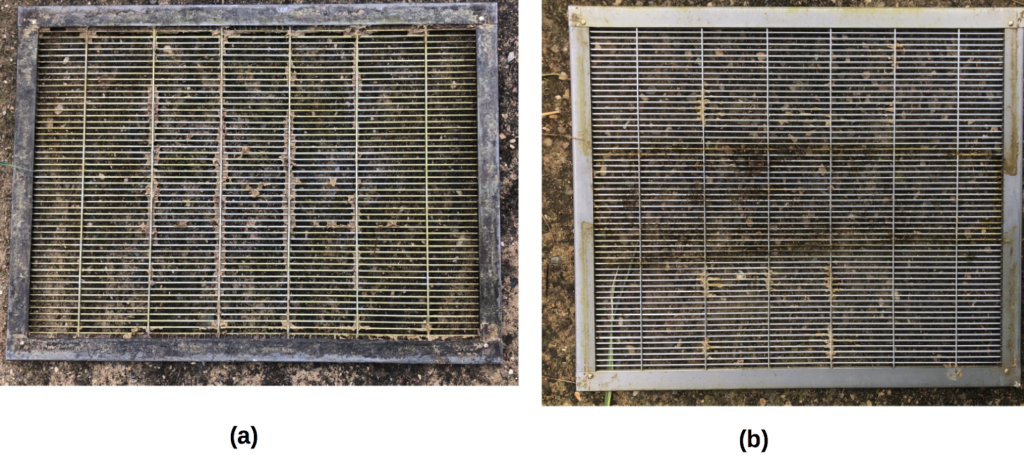
Figure 5 Standard welded wire queen excluders:
(a) eight frame excluder scraped to remove bur comb; and
(b) new ten frame excluder
Queen excluders serve the simple purpose of preventing queens and drones from entering overlying honey supers. In any large scale operation, the queen excluder becomes an almost indispensable tool in ensuring that frames of honey are brood free. This said, many hobby beekeepers operate their hives excluder-free claiming that they are ‘honey excluders’ and that they deny bees optimal use of hive space. In practice the small-scale operator can selectively harvest frames containing honey that are anyway mainly located above brood.
A simple variant of the flat excluder is the riser-rimmed excluder (Figure 6) with a flight entrance that allows drones access to any part of the colony.
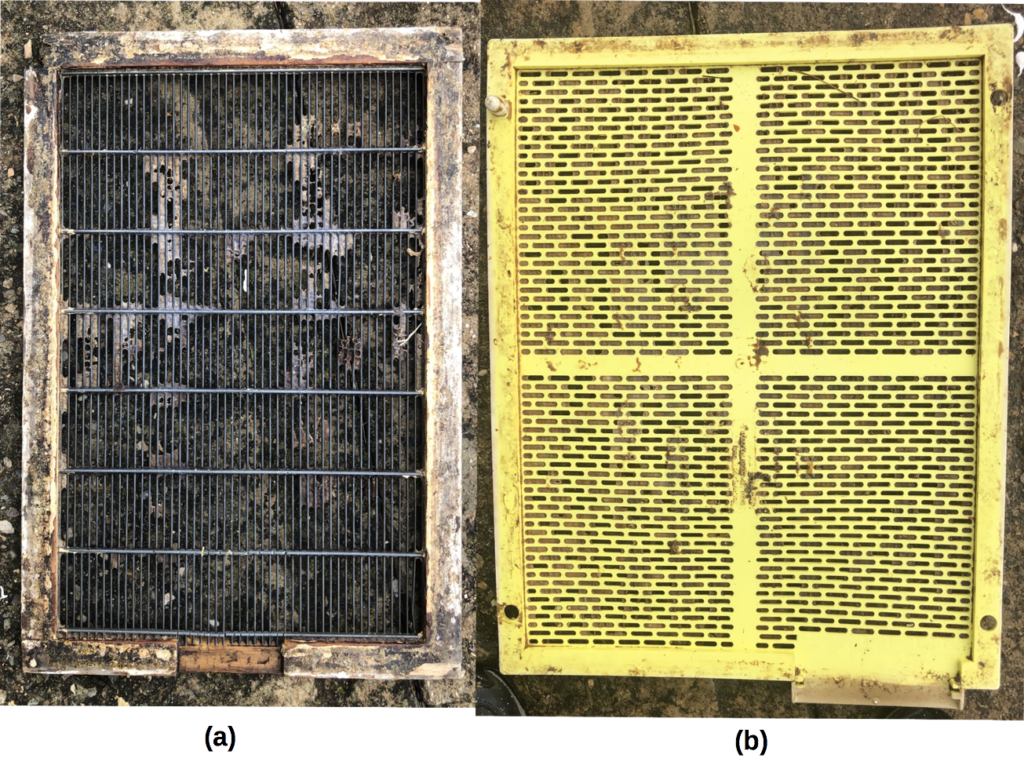
Figure 6 Rimmed queen excluders:
(a) scrap timber rimmed 8F excluder with 8 mm risers above and below excluder with central cut out flight entrance; and
(b) moulded Technoset slotted 10F excluder with offset flight entrance and landing board with 8 mm riser
Of course it is possible to combine a simple riser rim (Figure 7) with a standard flat queen excluder (Figure 5) to achieve the same function.

Figure 7 Riser rims with flight access often used in conjunction with queen excluders:
(a) 8F timber rim with slotted flight entrance; and
(b) 10F cross-braced Technoset rim with offset entrance
Riser rims are more often employed to provide direct flight access to honey supers (in lieu of the old practice of boring a circular hole) during strong honey flows: the additional entrance also allows emerging drones, from brood lifted above an excluder, flight egress. We also use riser rims (shims) in two-queen hive setups where the upper brood nest requires a second or even a third entrance.
Vertical queen excluders were once widely employed for partitioning overly large brood boxes used in queen raising operations. We have employed a vertical excluder in horizontal two-queen hive operations (Figure 8) to keep queens apart.
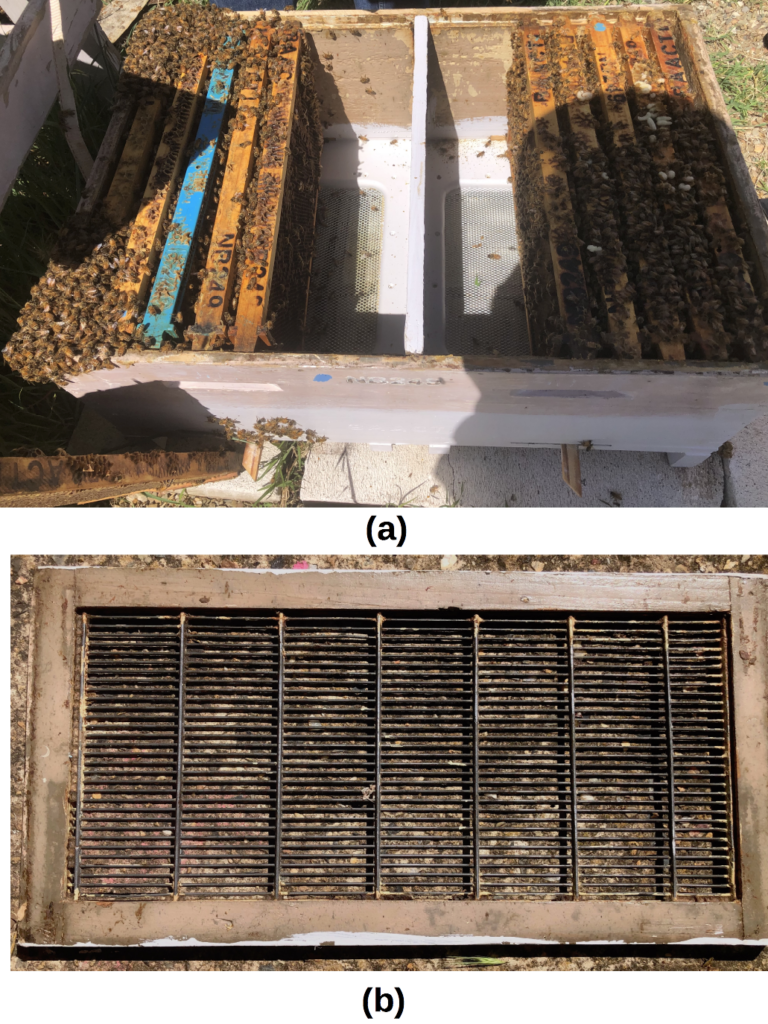
Figure 8 The vertical queen excluder:
(a) oversized full depth brood box with central slot accommodating either a solid division board or a vertical excluder; and
(b) vertical excluder lubricated with food-grade vaseline to allow easy removal
A parting note on queen excluder design. Most cheaper plastic and un-clad excluders are easily damaged and hardly worth purchasing. They are items you toss when they become un-serviceable (Figure 9).
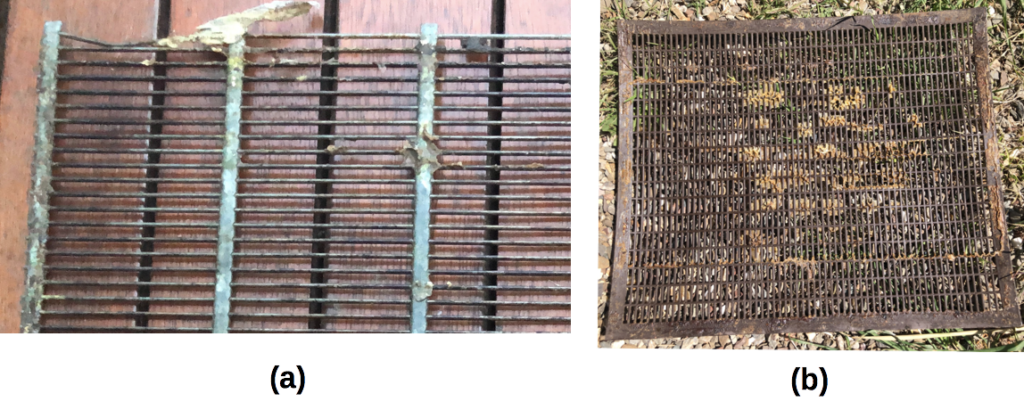
Figure 9 Unsheathed excluders showing:
(a) damaged wire excluder; and
(b) warped and degraded plastic excluder
Importantly queen excluders should be removed over winter or during times of dearth. Bees located in a bottom brood box in autumn will move up into stores in late winter (Figure 10a –> 10b). Leaving that excluder in place risks stranding the queen below the excluder and prevents the critical raising of young bees coming into spring.
Regular brood box reversal (Figure 10b –> 10c), where hives are operated with double brood boxes, is widely practiced as a means of rapidly building bees in the lead up to the honey flow.
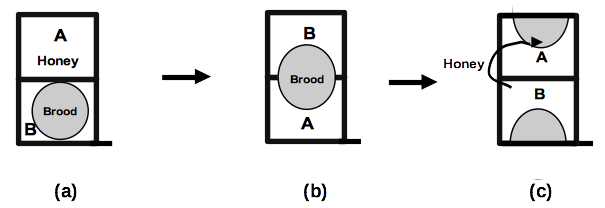
Figure 10 Brood box reversal:
(a) colony readied for overwintering in late autumn;
(b) brood moves up into stores in late winter and early spring; and
(c) brood boxes reversed to stimulate brood rearing
The Split Board
After the queen excluder, perhaps the most useful piece of ‘flat equipment’ we’ve come across is the nucleus or split board (Figure 11). Its primary function is to divide (split) a colony on the parent stand. This obviates the need to establish an offset hive that would require both an extra bottom board and a lid.
So the nucleus board is useful in splitting colonies (an emergency queen will be established in the queenless portion) and in swarm prevention where dividing the hive simulates, but prevents, swarming.
A ready supply of split boards are a much better alternative to sacks, old sheets and pieces of cardboard to cover supers of exposed frames when honey is being harvested and where robbing is likely to ensue.
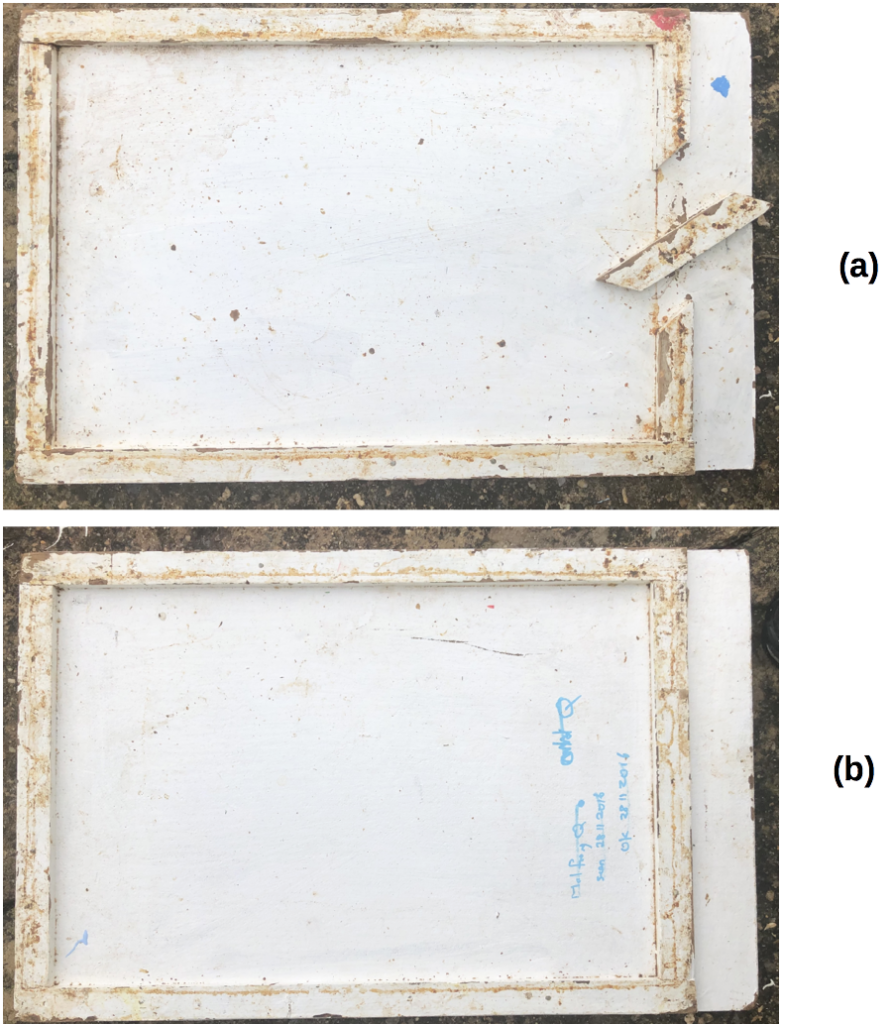
Figure 11 The split board:
(a) upper face showing 8 mm riser rim, closable pivot flight entrance and landing board; and
(b) lower closed face with 8 mm bee space riser surrounding rim
The split board finds still other uses. It can serve as a temporary bottom board or lid or indeed, in a deep and well sealed version, as a drip tray when extracting or transporting supers of honey.
Double Screens
Double screens (Figure 12) operate in much the same way as the split board. They fully divide the upper colony from the hive below on the parent stand. The screened board confers two advantages over the simple split board. The rising warmth from the brood chamber below accelerates the development of the upper colony while the mingling of hive odours allows colonies to be united without the traditional use of smoke or newspaper. Additionally, double screens can be employed as temporary screened bottom boards.
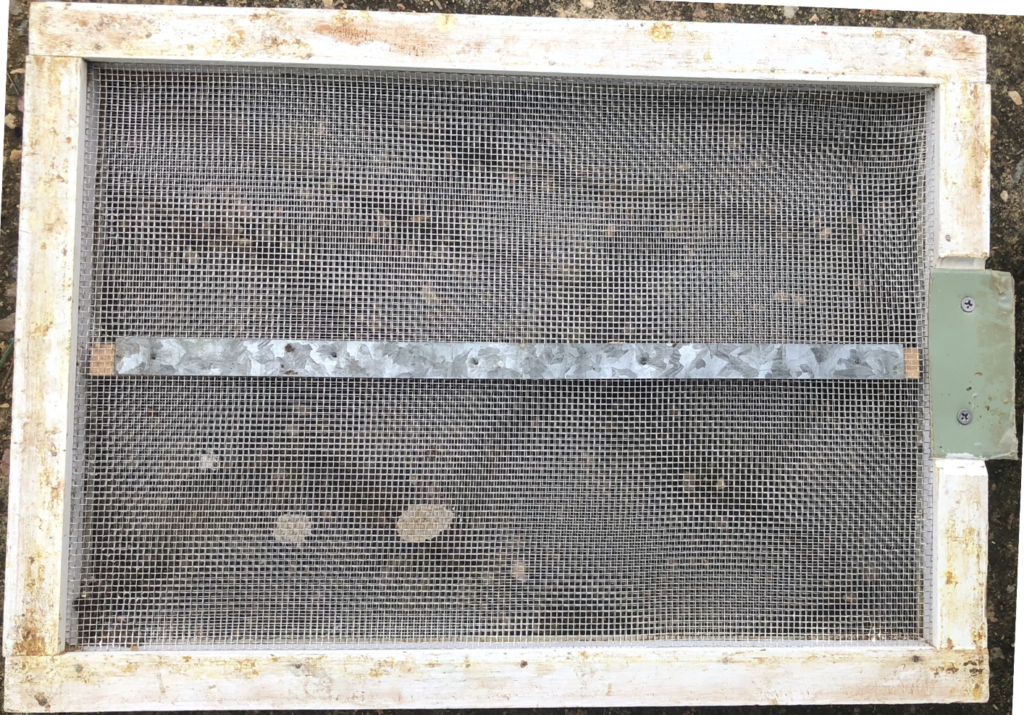
Figure 12 The double screen with approximately 8 mm screen spacer and flight entrance on upper right face
The Escape Board
A further variant of the hive separator is the escape board (Figure 13).

Figure 13 Bee escape board showing escape holes and non-return ports employing:
Porter escapes:
(a) upper face; and (b) lower escape ports; and
improvised extruded aluminium escapes:
(c) upper face; and (d) lower escape ports
Escape boards are used to clear a honey super of bees. Simply smoke your bees, lift off the one or two supers you want to extract, drop on the escape board – hole side up – and pop the supers full of bees back on. Come back a day later and the honey supers will be bee-free. A simple warning: bees won’t leave brood so they really only work reliably where you use queen excluders.
Using an escape board obviates the need to shake and brush each comb and is a life saver when extracting in autumn when robbing can make honey harvesting a perilous exercise.
In our follow up article, we will explore myriad top and bottom hive cappers, the gear that keeps bees on frames housed in open boxes out of the elements and keeps them snug and away from marauders.
Readings
iBBJ Eds (1886). Count Zorzi’s uncapping machine. British Bee Journal 14(199):166.
iiSnelgrove, L.E. (1981). Swarming: Its control and prevention. Thirteenth Edition, Snelgrove & Smith, Pleasant View, Bleadon Hill, Weston-Super-Mare, Avon BS24 9JT.
iiiBBJ Eds (1886). Mr Corneil’s super. British Bee Journal 14(230):531-532.
ivBBJ Eds (1891). Queens passing through excluder zinc. British Bee Journal 19(450):176.

Be the first to comment